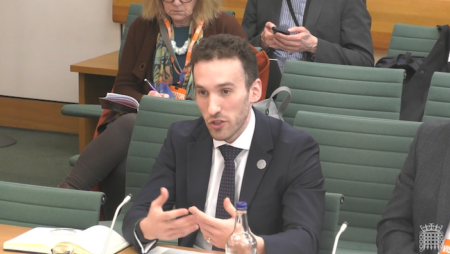The Connecticut Department of Transportation (CTDOT) is launching a multimodal study of safety, rail, bus and traffic improvements, and the potential for economic development along the I-95 corridor from Greenwich to North Stonington.
The initiative on the I-95 corridor is part of Governor Dannel P Malloy’s 30-year, US$100bn ‘Let’s Go CT’ transportation vision. CTDOT has defined two separate multimodal planning programs: I-95 West, involving potential work from Greenwich to New Haven; and I-95 East, from Branford to North Stonington. The studies are made possible by recent funding allocations by the state Bond Commission, with US$1m for the I-95 West study and US$125,000 for I-95 East.
The I-95-West study will include potential investment scenarios for I-95, the New Haven commuter rail line, and better integration of the region’s bus system. The initial focus for highway purposes is anticipated to be between Bridgeport and Stamford where highway congestion is most prevalent. The I-95-East effort will begin with an update of a 2004 study outlining the needs and deficiencies of I-95 itself. Separate investment studies are anticipated for rail and transit programs as additional funding is allocated.
While the entire corridor requires additional capacity, the primary area of need and the focus of the ‘East’ effort will be the section of I-95 between the Baldwin Bridge in Old Lyme and the Gold Star Bridge in New London, including the I-95 / I-395 interchange. CTDOT is also committing to addressing safety and traffic issues on Route 85 in Salem, Montville and Waterford in lieu of an earlier proposal to extend Route 11 to the I-95 / I-395 interchange. CTDOT has been unable to get the required federal environmental approvals for a Route 11 extension and has determined the extension project will no longer be pursued. Route 85 is the primary alternative to Route 11, and local officials have repeatedly expressed a strong desire to address the Route 85 issues as soon as possible.
The I-95 East improvements are needed to better serve residents and businesses in the region, which has an economy distinctly different from much of the rest of the state. Much of southeastern Connecticut’s economy is driven by strong tourism and manufacturing sectors. Both are dependent on a good highway system that provides easy access for tourists from outside the region, and for trucks that transport much of the materials needed for the industries in the region. CTDOT is one of the members of the I-95 Corridor Coalition, which oversees the major north-south route along the USA’s eastern seaboard. The I-95 covers 1,917 miles (3,085km) and accounts for 35% of the USA’s vehicle miles traveled (VMT).
“Our goal is to develop a detailed implementation plan that includes conceptual designs, impact assessments, cost estimates, and project phasing options,” said CTDOT commissioner, James P Redeker. “I-95 is literally the backbone of the economy of the southern tier of Connecticut, and these studies will help us to create a framework for transportation and economic development through the corridor for decades to come.”




